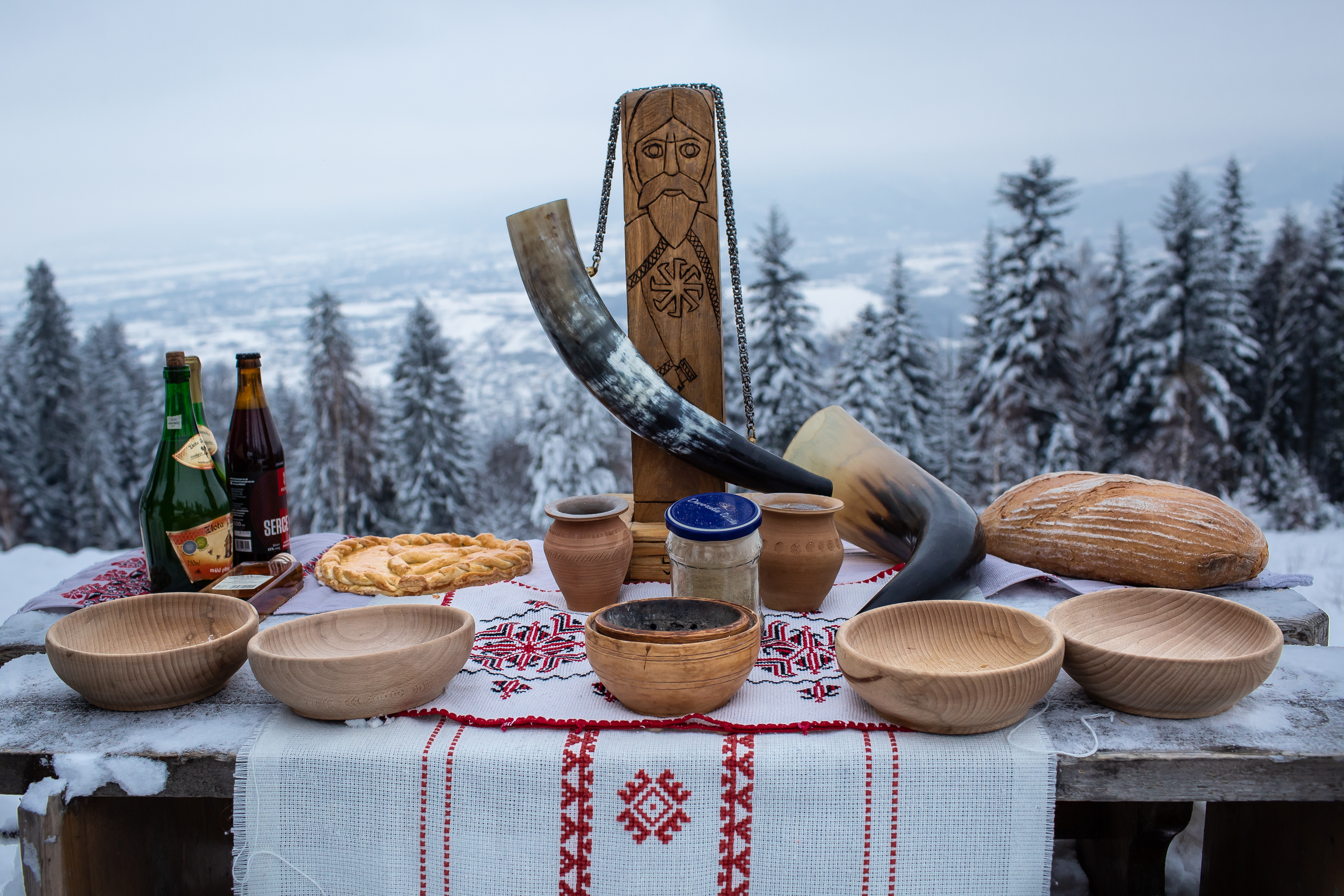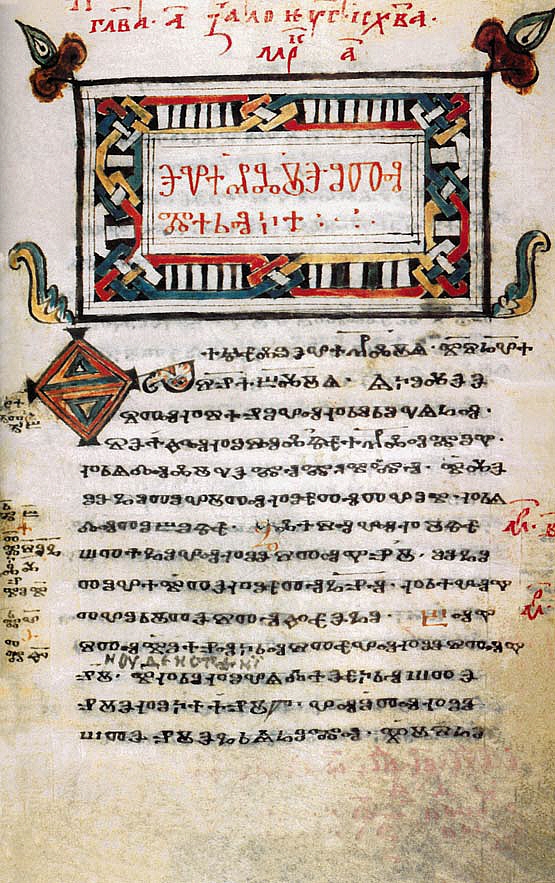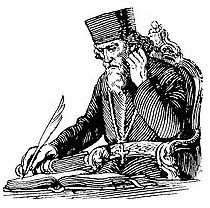|
Svarog
Svarog is a Slavic god of fire and blacksmithing, who was once interpreted as a sky god on the basis of an etymology rejected by modern scholarship. He is mentioned in only one source, the '' Primary Chronicle'', which is problematic in interpretation. He is presented there as the Slavic equivalent of the Greek god Hephaestus. The meaning of his name is associated with fire. He is the father of Dazhbog and Svarozhits. Etymology This theonym is preserved in several forms, in the '' Primary Chronicle'' as Соварога, ''Sovaroga'', Сварогъ, ''Svarogǔ'', Сварогом, ''Svarogom'', Сварога, ''Svaroga'', and in the ''Sofia Chronograph'' as: Сварог, ''Svarog'', Сварож, ''Svarož''. The fire etymology was one of the first to be proposed by the Slovene linguist Franc Miklošič (1875), who explained the theonym ''Svarog'' as consisting of the stem ''svar'' 'heat', 'light', and the suffix ''-og''. The stem ''svar'' itself was to be derived from a ... [...More Info...] [...Related Items...] OR: [Wikipedia] [Google] [Baidu] |
Svarozhits
Svarozhits (Latin: Zuarasiz, Zuarasici, Old East Slavic: Сварожиць, Russian: Сварожиц), Svarozhich (Old East Slavic: Сварожичь, Russian: Сварожич) is a Slavic god of fire, son of Svarog. One of the few Pan-Slavic gods. He is most likely identical with Radegast, less often identified with Dazhbog. Etymology The theonym ''Svarozhits'' comes from the theonym ''Svarog'' with the suffix ''-its'', ''-ich''. According to most scholars, ''Svarog'' is related to the word '' svar'' "quarrel", '' svariti'' "to quarrel, argue", and cognate words are Old English ''andswaru'' (→ English ''swear''), Old Norse ''sverja'' "to swear", or Sanskrit ''svarati'' (स्वरति) "to sing", "to sound", "to praise". An affinity has also been suggested with Old High German ''gi-swerc'' "storm clouds", Old English ''sweorc'' "darkness, cloud, fog", Dutch ''zwerk'' "cloud, cloudy sky", and Indian '' svárgas'' "heaven". It has also been suggested that Svarog may ... [...More Info...] [...Related Items...] OR: [Wikipedia] [Google] [Baidu] |
Dazhbog
Dazhbog (russian: Дажьбо́г, Дажбог), alternatively Daždźbok ( be, Даждзьбог), Dažbog, Dazhdbog, Dajbog, Daybog, Dabog, Dazibogu, or Dadzbóg, was one of the major gods of Slavic mythology, most likely a solar deity and possibly a cultural hero. He is one of several authentic Slavic gods, mentioned by a number of medieval manuscripts, and one of the few Slavic gods for which evidence of worship can be found in all Slavic tribes. Dazhbog (or Dazhboh) is mentioned in the '' Primary Chronicle'', a history of early Kievan Rus' as one of seven gods whose statues Prince Vladimir the Great erected in front of his palace in Kiev in 980, when he came to the throne. The name is also mentioned in the Hypatian Codex, as well as in the medieval Old East Slavic epic ''The Tale of Igor's Campaign .'' Etymology The Proto-Slavic reconstruction is *dadjьbogъ,Олег Трубачёв (ред.) (1974–), Этимологический словарь славянс� ... [...More Info...] [...Related Items...] OR: [Wikipedia] [Google] [Baidu] |
Andrey Shishkin
Andrey Alekseyevich Shishkin (russian: Андрей Алексеевич Шишкин; born 1960) is a Russian painter. His works are one of the most prominent examples of the modern Russian "pagan art" scene related to Slavic Native Faith in Russia. He was born and raised in Moscow. He has dealt with painting since the beginning of 2000s and he currently works in a private studio. His main directions of creativity are portraits and historical paintings in realist attempt. Special theme in his works is Slavic mythology Slavic mythology or Slavic religion is the religious beliefs, myths, and ritual practices of the Slavs before Christianisation, which occurred at various stages between the 8th and the 13th century. The South Slavs, who likely settled in the B ... and history. File:Bannik by Andrey Shishkin.jpg, ''Bannik'' File:Belun by Andrey Shishkin.jpg, ''Belun'' File:Bereginya by Andrey Shishkin.jpg, ''Bereginya'' File:Blagoslovenie ratnika by Andrey Shishkin.jpg, ''Blag ... [...More Info...] [...Related Items...] OR: [Wikipedia] [Google] [Baidu] |
Aleksander Brückner
Aleksander Brückner (; 29 January 1856 – 24 May 1939) was a Polish scholar of Slavic languages and literatures (Slavistics), philologist, lexicographer and historian of literature. He is among the most notable Slavicists of the late 19th and early 20th centuries, and the first to prepare complete monographs on the history of Polish language and culture. He published more than 1,500 titles and discovered the oldest extant prose text in Polish (the '' Holy Cross Sermons''). Life Brückner was born in Brzeżany (Berezhany) in Galicia, Austrian Empire, to an Austro-Polish family who had moved there from Stryj three generations earlier. He studied at the German Gymnasium in Lwów (Lemberg) under Omelian Ohonovsky, in Vienna under Franz Miklosich, and in Berlin under Vatroslav Jagić. Brückner first taught at Lwów ( Lwów University). In 1876 he received a doctorate at the University of Vienna, and in 1878 his habilitation for a study on Slavic settlements around Magdebur ... [...More Info...] [...Related Items...] OR: [Wikipedia] [Google] [Baidu] |
Sky God
The sky often has important religious significance. Many religions, both polytheistic and monotheistic, have deities associated with the sky. The daytime sky deities are typically distinct from the nighttime ones. Stith Thompson's ''Motif-Index of Folk-Literature'' reflects this by separating the category of "Sky-god" (A210) from that of "Star-god" (A250). In mythology, nighttime gods are usually known as night deities and gods of stars simply as star gods. Both of these categories are included here since they relate to the sky. Luminary deities are included as well since the sun and moon are located in the sky. Some religions may also have a deity or personification of the day, distinct from the god of the day lit sky, to complement the deity or personification of the night. Daytime gods and nighttime gods are frequently deities of an " upper world" or "celestial world" opposed to the earth and a " netherworld" (gods of the underworld are sometimes called "chthonic" deitie ... [...More Info...] [...Related Items...] OR: [Wikipedia] [Google] [Baidu] |
Serbo-Croatian
Serbo-Croatian () – also called Serbo-Croat (), Serbo-Croat-Bosnian (SCB), Bosnian-Croatian-Serbian (BCS), and Bosnian-Croatian-Montenegrin-Serbian (BCMS) – is a South Slavic language and the primary language of Serbia, Croatia, Bosnia and Herzegovina, and Montenegro. It is a pluricentric language with four mutually intelligible standard varieties, namely Serbian, Croatian, Bosnian, and Montenegrin. South Slavic languages historically formed a continuum. The turbulent history of the area, particularly due to expansion of the Ottoman Empire, resulted in a patchwork of dialectal and religious differences. Due to population migrations, Shtokavian became the most widespread dialect in the western Balkans, intruding westwards into the area previously occupied by Chakavian and Kajkavian (which further blend into Slovenian in the northwest). Bosniaks, Croats and Serbs differ in religion and were historically often part of different cultural circles, although a large part ... [...More Info...] [...Related Items...] OR: [Wikipedia] [Google] [Baidu] |
Diminutive
A diminutive is a root word that has been modified to convey a slighter degree of its root meaning, either to convey the smallness of the object or quality named, or to convey a sense of intimacy or endearment. A ( abbreviated ) is a word-formation device used to express such meanings. In many languages, such forms can be translated as "little" and diminutives can also be formed as multi-word constructions such as " Tiny Tim". Diminutives are often employed as nicknames and pet names when speaking to small children and when expressing extreme tenderness and intimacy to an adult. The opposite of the diminutive form is the augmentative. Beyond the ''diminutive form'' of a single word, a ''diminutive'' can be a multi-word name, such as "Tiny Tim" or "Little Dorrit". In many languages, formation of diminutives by adding suffixes is a productive part of the language. For example, in Spanish can be a nickname for someone who is overweight, and by adding an suffix, it becomes wh ... [...More Info...] [...Related Items...] OR: [Wikipedia] [Google] [Baidu] |
Bulgarian Language
Bulgarian (, ; bg, label=none, български, bălgarski, ) is an Eastern South Slavic language spoken in Southeastern Europe, primarily in Bulgaria. It is the language of the Bulgarians. Along with the closely related Macedonian language (collectively forming the East South Slavic languages), it is a member of the Balkan sprachbund and South Slavic dialect continuum of the Indo-European language family. The two languages have several characteristics that set them apart from all other Slavic languages, including the elimination of case declension, the development of a suffixed definite article, and the lack of a verb infinitive. They retain and have further developed the Proto-Slavic verb system (albeit analytically). One such major development is the innovation of evidential verb forms to encode for the source of information: witnessed, inferred, or reported. It is the official language of Bulgaria, and since 2007 has been among the official languages of ... [...More Info...] [...Related Items...] OR: [Wikipedia] [Google] [Baidu] |
South Slavic Languages
The South Slavic languages are one of three branches of the Slavic languages. There are approximately 30 million speakers, mainly in the Balkans. These are separated geographically from speakers of the other two Slavic branches (West and East) by a belt of German, Hungarian and Romanian speakers. History The first South Slavic language to be written (also the first attested Slavic language) was the variety of the Eastern South Slavic spoken in Thessaloniki, now called Old Church Slavonic, in the ninth century. It is retained as a liturgical language in Slavic Orthodox churches in the form of various local Church Slavonic traditions. Classification The South Slavic languages constitute a dialect continuum. Serbian, Croatian, Bosnian, and Montenegrin constitute a single dialect within this continuum. * Eastern ** Bulgarian – (ISO 639-1 code: bg; ISO 639-2 code: bul; SIL code: bul; Linguasphere: 53-AAA-hb) ** Macedonian – (ISO 639-1 code: mk; ISO 639-2(B) code: ma ... [...More Info...] [...Related Items...] OR: [Wikipedia] [Google] [Baidu] |
Romanian Language
Romanian (obsolete spellings: Rumanian or Roumanian; autonym: ''limba română'' , or ''românește'', ) is the official and main language of Romania and the Republic of Moldova. As a minority language it is spoken by stable communities in the countries surrounding Romania (Bulgaria, Hungary, Serbia, and Ukraine), and by the large Romanian diaspora. In total, it is spoken by 28–29 million people as an L1+ L2, of whom 23–24 millions are native speakers. In Europe, Romanian is rated as a medium level language, occupying the tenth position among thirty-seven official languages. Romanian is part of the Eastern Romance sub-branch of Romance languages, a linguistic group that evolved from several dialects of Vulgar Latin which separated from the Western Romance languages in the course of the period from the 5th to the 8th centuries. To distinguish it within the Eastern Romance languages, in comparative linguistics it is called ''Daco-Romanian'' as opposed to its closest r ... [...More Info...] [...Related Items...] OR: [Wikipedia] [Google] [Baidu] |
Poland
Poland, officially the Republic of Poland, , is a country in Central Europe. Poland is divided into Voivodeships of Poland, sixteen voivodeships and is the fifth most populous member state of the European Union (EU), with over 38 million people, and the List of European countries by area, seventh largest EU country, covering a combined area of . It extends from the Baltic Sea in the north to the Sudetes and Carpathian Mountains in the south, bordering seven countries. The territory is characterised by a varied landscape, diverse ecosystems, and Temperate climate, temperate transitional climate. The capital and List of cities and towns in Poland, largest city is Warsaw; other major cities include Kraków, Wrocław, Łódź, Poznań, and Gdańsk. Prehistory and protohistory of Poland, Humans have been present on Polish soil since the Lower Paleolithic, with continuous settlement since the end of the Last Glacial Period over 12,000 years ago. Culturally diverse throughout ... [...More Info...] [...Related Items...] OR: [Wikipedia] [Google] [Baidu] |
Sorbian Languages
The Sorbian languages ( hsb, serbska rěč, dsb, serbska rěc) are the Upper Sorbian language and Lower Sorbian language, two closely related and partially mutually intelligible languages spoken by the Sorbs, a West Slavic ethno-cultural minority in the Lusatia region of Eastern Germany. They are classified under the West Slavic branch of the Indo-European languages and are therefore closely related to the other two West Slavic subgroups: Lechitic and Czech–Slovak.About Sorbian Language by Helmut Faska, University of Leipzig Historically, the languages have also been known as Wendish (named after the [...More Info...] [...Related Items...] OR: [Wikipedia] [Google] [Baidu] |
.jpg)





